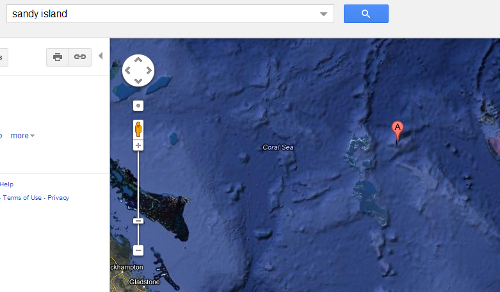Here’s something to cheer up the team behind Apple’s notorious mapping fails: a South Pacific island shown on both Google Maps and old-school atlases turns out not to exist.
Sandy Island is shown as lying around 80 percent of the way along a line from the Australian coastal town of Cairns and the French-governed island of New Caledonia. As well as appearing as a mysterious and detail-less black line on Google Maps that suggests it is around 15 miles long, it appears in several atlases that have the region shown in great detail and also shows up on some weather maps. It also appears on Bing Maps but isn’t labeled.
The problem is that a maritime research vessel, the Southern Surveyor, has just made a 25 day trip to the location while researching Australia’s continental crust and discovered there’s absolutely nothing there.
There are already several theories for the absence. One is that somebody once made a blunder that has been reproduced over the years. It may be that somebody confused the results of mapping of the ocean floor with a piece of land. The water in the area appears to be particularly deep.
Another is that it’s a copyright trap, meaning it was intentionally placed there to catch people who reproduce maps as their own work. That seems unlikely however as such traps usually only involve fictional streets (such as Lye Close in my own town of Bristol) and not anything that could seriously harm people relying on it for navigation.
It has been noted that if the island existed it would technically belong to France, but appears never to have shown up on official French government maps.
The island shouldn’t be confused with another of the same name off the South West coast of Australia that is part of a national park and is known to home seabirds.

